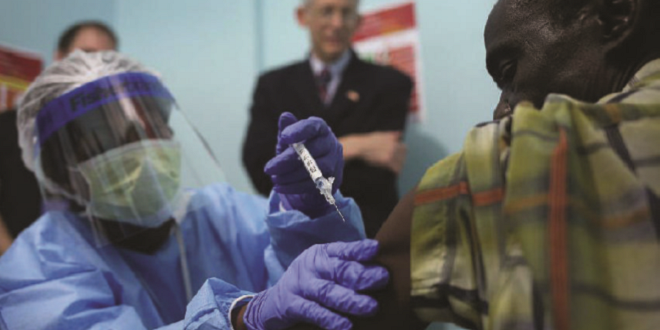
Monrovia, Liberia | AFP | More people have died following the outbreak of a mysterious illness that began in southeastern Liberia but has spread to the capital, with 12 unexplained deaths so far, health authorities told AFP Tuesday.
Liberia’s health ministry and the World Health Organization (WHO) both confirmed the revised death toll, while minister Sorbor George said the illness first registered in Sinoe County was now present in Monrovia.
“The illness has entered the capital. A man came from Sinoe to attend a funeral in Monrovia and he got sick. He shows the same symptoms, later on he died,” George said.
“After he died his girlfriend got sick showing the same symptoms, she died also,” he added.
The Liberian government had given a death toll of nine on Friday, while the WHO had said 11.
The UN health body raised the total number of cases beginning from April 23 to 25, up from 19 on Friday, and said the “majority” related to the separate funeral of a religious leader in Sinoe County.
The WHO has confirmed the illness is not Ebola, the haemorrhagic fever that killed thousands in a recent west African epidemic, despite some similar symptoms, nor is it Lassa fever, a virus also present in the region.
WHO spokesman Tarik Jasarevic said tests were ongoing at the Centers for Disease Control and Prevention in Atlanta, United States, after previous inconclusive results elsewhere.
“Field investigation teams are collecting data to establish possible association between any food and drinks served during this funeral ceremony to which all of the victims and sick people have been linked,” Jasarevic added.
The illness causes fever, vomiting, headache and diarrhoea, but no definitive link with the deaths has yet been made.
The outbreak raises memories of the recent epidemic of Ebola in west Africa, which began in December 2013 and of the three countries affected hit Liberia the hardest. More than 29,000 were infected, estimates said, and a third of those died.
Many Ebola survivors continue to suffer high levels of shame and discrimination, exacerbated by findings that the virus can stay in some parts of the body for at least nine months after a patient has recovered.
 The Independent Uganda: You get the Truth we Pay the Price
The Independent Uganda: You get the Truth we Pay the Price


